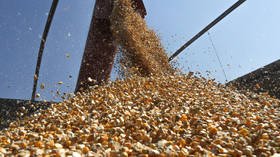China wants to feed millions with seawater rice

Chinese scientists have succeeded in developing a new saline-alkali tolerant type of rice in coastal regions where it’s currently impossible to grow crops. The development comes as China strives to secure domestic food and energy supplies amid global warming and geopolitical tensions.
“China is looking at another method now, to develop grain varieties that can withstand the soil’s saltiness,” Zhang Zhaoxin, a researcher with the country’s agricultural ministry, told Bloomberg.
Known as “seawater rice” because it’s grown in salty soil on the coast, the strains were created by over-expressing a gene from selected wild rice. Test fields in Tianjin recorded a yield of 4.6 metric tons per acre last year, higher than the national average for production of standard rice varieties.
China has been studying salt-tolerant rice since at least the 1950s. The research has been spurred on by the country’s coastal waters rising faster than the global average over the last 40 years. Authorities have raised alarms over China’s heavy reliance on its long and low eastern coast for grain production.
The idea of a seawater rice was suggested in 2012 by agricultural scientist Yuan Longping, known as the “father of hybrid rice.” He said in a documentary broadcast in 2020, “We could feed 80 million more people” with salt-tolerant rice.
The research center in Qingdao aims to harvest 30 million tons of the crop using 6.7 million hectares of barren land. The research team said last October it can meet the goal of growing 6.7 million hectares of seawater rice within ten years. In 2021, the group was put in charge of 400,000 hectares of land to expand production of salt-resistant rice.
“If China can be more self-sufficient in staple foods, it would be a contribution to the world's food security too,” said Zhang. “The less China imports, the more other countries will have.”
For more stories on economy & finance visit RT's business section













